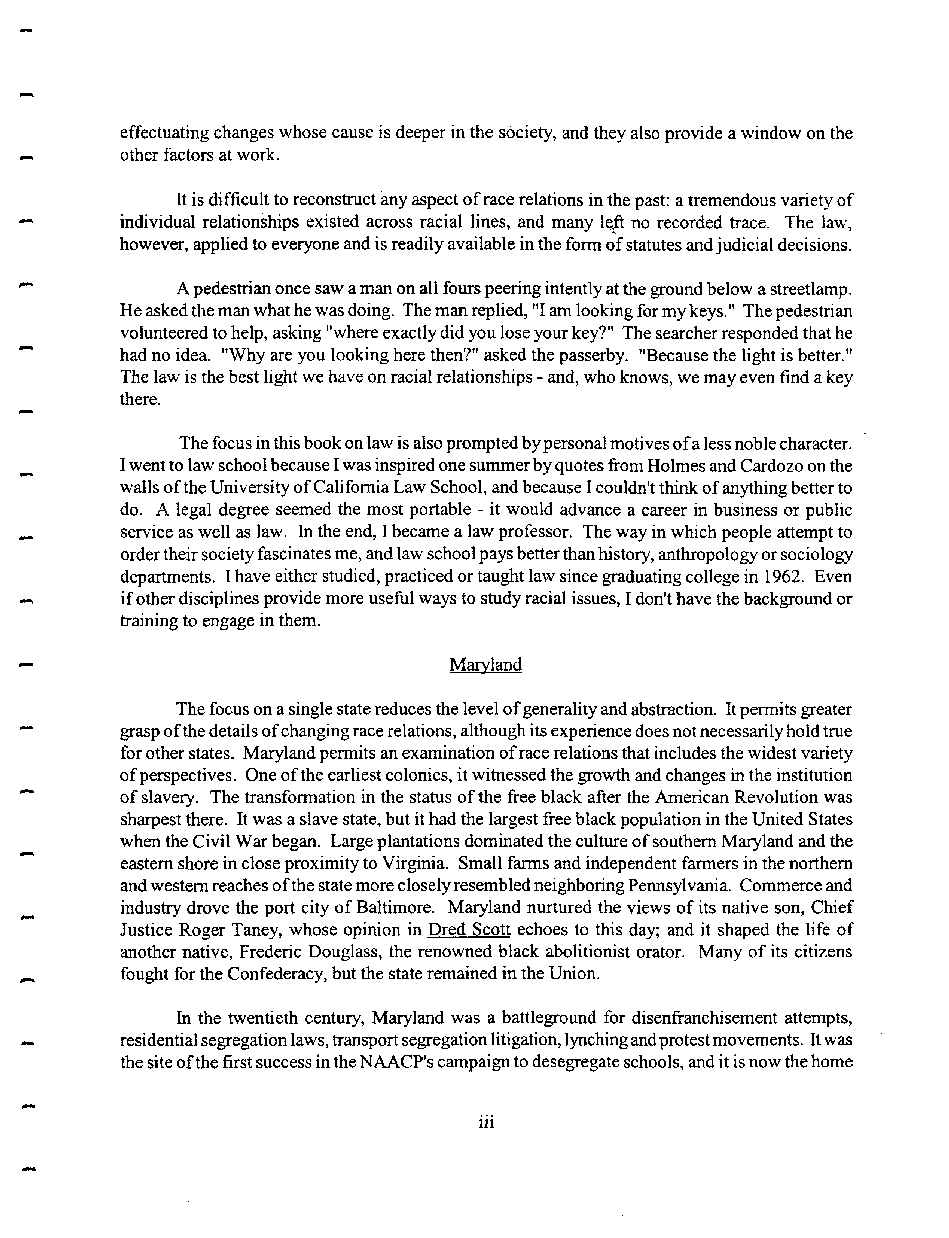|
effectuating changes whose cause is deeper in the society, and they also provide a window on the
other factors at work.
It is difficult to reconstruct any aspect of race relations in the past: a tremendous variety of
individual relationships existed across racial lines, and many left no recorded trace. The law,
however, applied to everyone and is readily available in the form of statutes and judicial decisions.
A pedestrian once saw a man on all fours peering intently at the ground below a streetlamp.
He asked the man what he was doing. The man replied, "I am looking for my keys." The pedestrian
volunteered to help, asking "where exactly did you lose your key?" The searcher responded that he
had no idea. "Why are you looking here then?" asked the passerby. "Because the light is better."
The law is the best light we have on racial relationships - and, who knows, we may even find a key
there.
The focus in this book on law is also prompted by personal motives of a less noble character.
I went to law school because I was inspired one summer by quotes from Holmes and Cardozo on the
walls of the University of California Law School, and because I couldn't think of anything better to
do. A legal degree seemed the most portable - it would advance a career in business or public
service as well as law. In the end, I became a law professor. The way in which people attempt to
order their society fascinates me, and law school pays better than history, anthropology or sociology
departments. I have either studied, practiced or taught law since graduating college in 1962. Even
if other disciplines provide more useful ways to study racial issues, I don't have the background or
training to engage in them.
Maryland
The focus on a single state reduces the level of generality and abstraction. It permits greater
grasp of the details of changing race relations, although its experience does not necessarily hold true
for other states. Maryland permits an examination of race relations that includes the widest variety
of perspectives. One of the earliest colonies, it witnessed the growth and changes in the institution
of slavery. The transformation in the status of the free black after the American Revolution was
sharpest there. It was a slave state, but it had the largest free black population in the United States
when the Civil War began. Large plantations dominated the culture of southern Maryland and the
eastern shore in close proximity to Virginia. Small farms and independent farmers in the northern
and western reaches of the state more closely resembled neighboring Pennsylvania. Commerce and
industry drove the port city of Baltimore. Maryland nurtured the views of its native son, Chief
Justice Roger Taney, whose opinion in Dred Scott echoes to this day; and it shaped the life of
another native, Frederic Douglass, the renowned black abolitionist orator. Many of its citizens
fought for the Confederacy, but the state remained in the Union.
In the twentieth century, Maryland was a battleground for disenfranchisement attempts,
residential segregation laws, transport segregation litigation, lynching and protest movements. It was
the site of the first success in the NAACP's campaign to desegregate schools, and it is now the home
in
�
|

